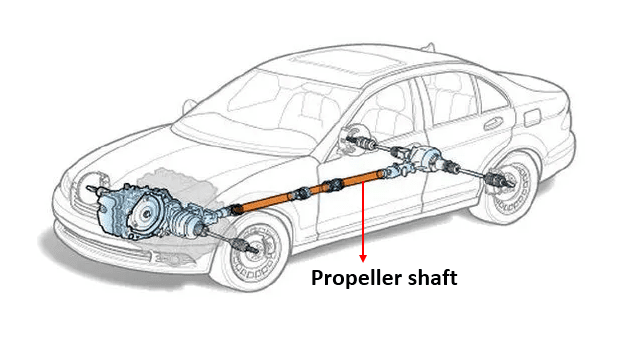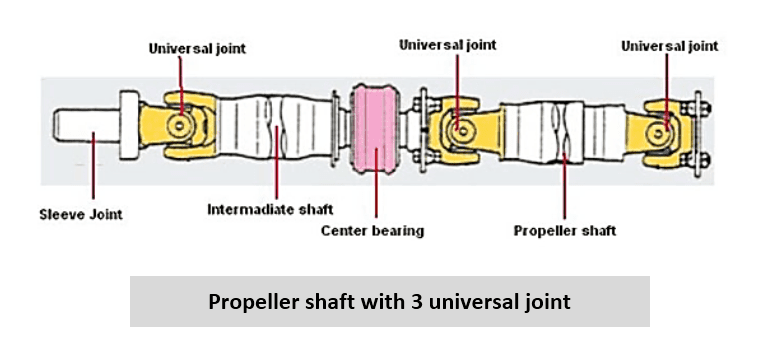Function of propeller shaft in car
The propeller shaft in car, often called the prop shaft, is part of the drive train system. The prop shaft is commonly used in FR (Front engine Rear wheel drive) and 4WD (Four Wheel Drive) vehicle types.
The propeller shaft in car locates between the transmission and the rear axle. It becomes a link between the transmission and the rear axle to continue the rotation produced by the transmission to turn the rear wheels.
The propeller shaft's function is to transmit the torque, power, and rotation speed from the transmission to the axle. However, this propeller shaft must transmit rotational power smoothly and gently despite changes in the amount of load carried by the vehicle and changes in road surface conditions.
The propeller shaft is functionally shaped to cope with changes in the distance and height between the transmission and the axle when the wheels travel on uneven roads.
To fulfill all the road conditions, at least three main requirements that a propeller shaft in car must own:
- Able to transmit the rotary force from the transmission to the axle gently.
- Able to move freely up, down, sideways (to the right and left) while continuing the rotational force from transmission to the axle. Mainly when there is a change in the axle's height due to uneven roads.
- Able to move back and forth (sliding) when there is a change in the distance when the car is driving on an uneven road.
The propeller shaft requirements that it must own above certainly affect the design and construction of the propeller shaft. Currently, there are two types of propeller shafts used in vehicles, namely:
-
Propeller shaft with two universal joint types: This type of
propeller shaft has two universal joints. Look at the example image
below:
-
Propeller shaft with three universal joint types: In these three
universal joint types, the propeller shaft has three universal joints. Look
at the example image below:
In general, the propeller shaft is made from a tubular steel pipe designed to have the strength and resistance to the rotational speed and torsional force that occurs while driving. Besides, the propeller shaft must also remain balanced when rotating at various rotational speeds.
For this reason, we often find balance weight which is generally box-shaped and attached to certain parts of the propeller shaft. The purpose of installing this balance weight is to minimize the vibrations that occur when rotating so that the rotation on the propeller shaft remains balanced.
Also read:- Clutch function in car
- What does a differential do in a car?
- 6 Common causes of car shake when driving slow
For more details about the propeller shaft in car, here are the names of the components on the propeller shaft
- Slip yoke. It functions as a link between the transmission's output shaft and the propeller shaft connected with a front universal joint. This slip yoke can move back and forth so that the propeller shaft can lengthen and shorten when there is a change in the distance between the transmission and the axle.
- Front universal joint. It functions as a joint connector between the driveshaft and the slip yoke. The propeller shaft can move in several angular directions and rotate to compensate for height changes when passing uneven roads with a universal joint.
- The driveshaft serves as the part that will continue the torsional power from the transmission to the axle. In this section, the balance weight is installed to balance the rotation.
- The rear universal joint. It functions as a connecting joint between the driveshaft and the yoke connected to the axle. This rear universal joint also provides angular freedom when the propeller shaft rotates between the driveshaft and the axle.
- The yoke flange serves as a link between the driveshaft and the axle through a rear universal joint.
- Center bearing. It functions to continue the propeller shaft rotation that lies between the driveshaft, which connects to the universal joint. You will only find center bearings on propeller shafts that use three universal joints.



